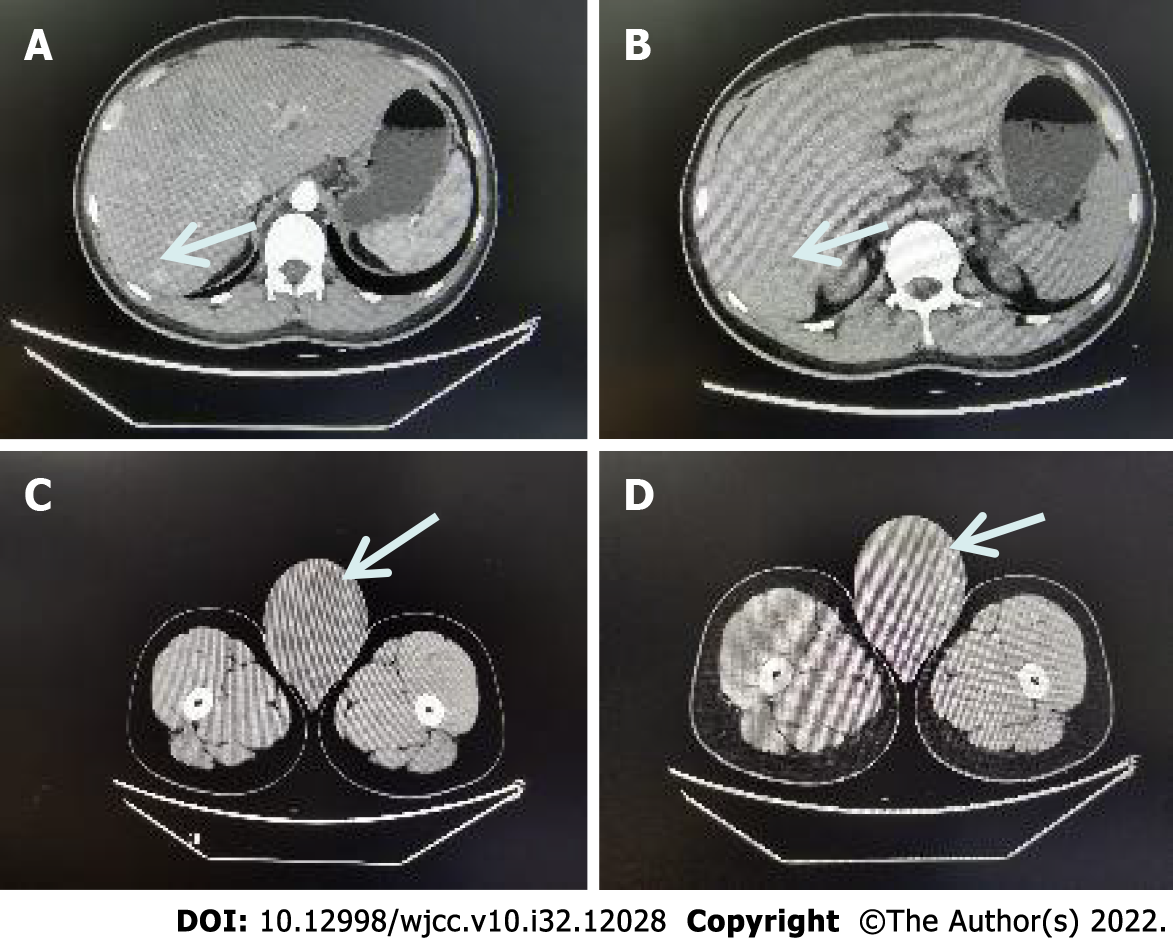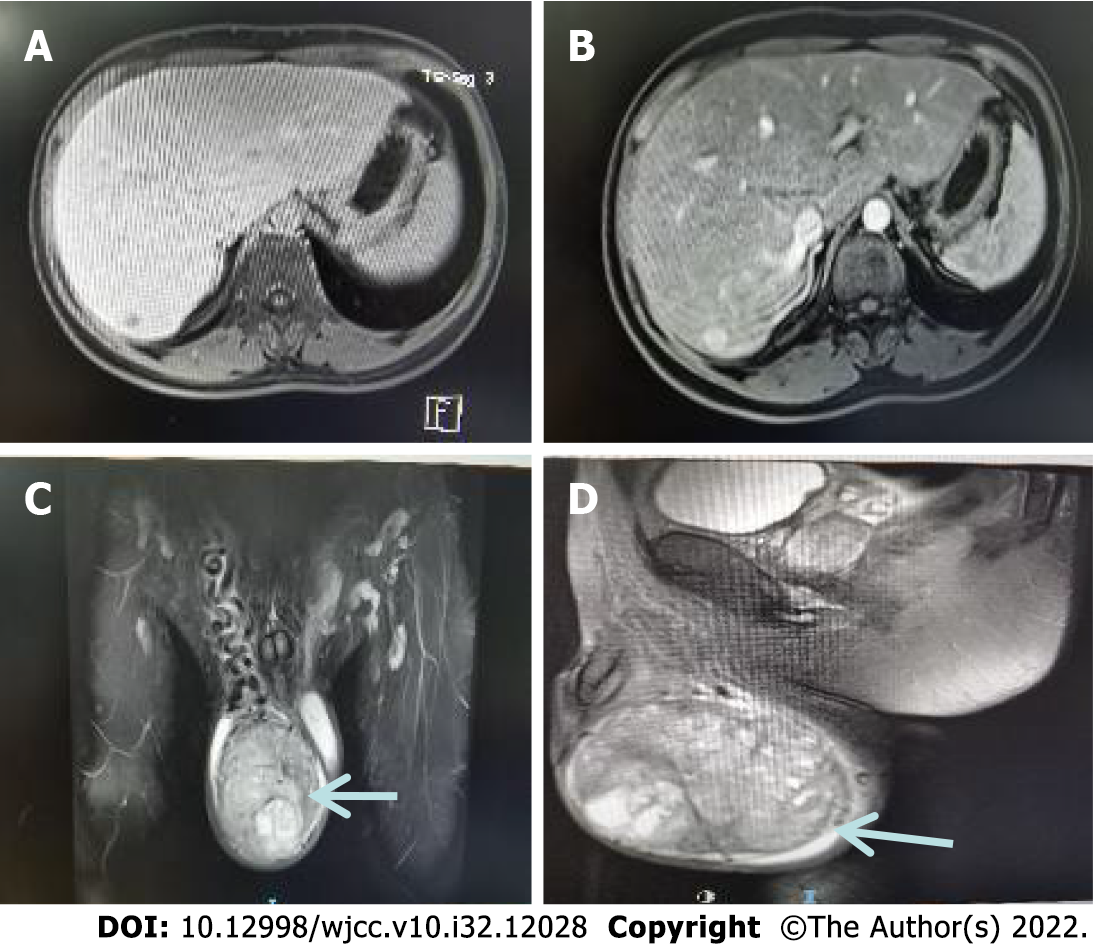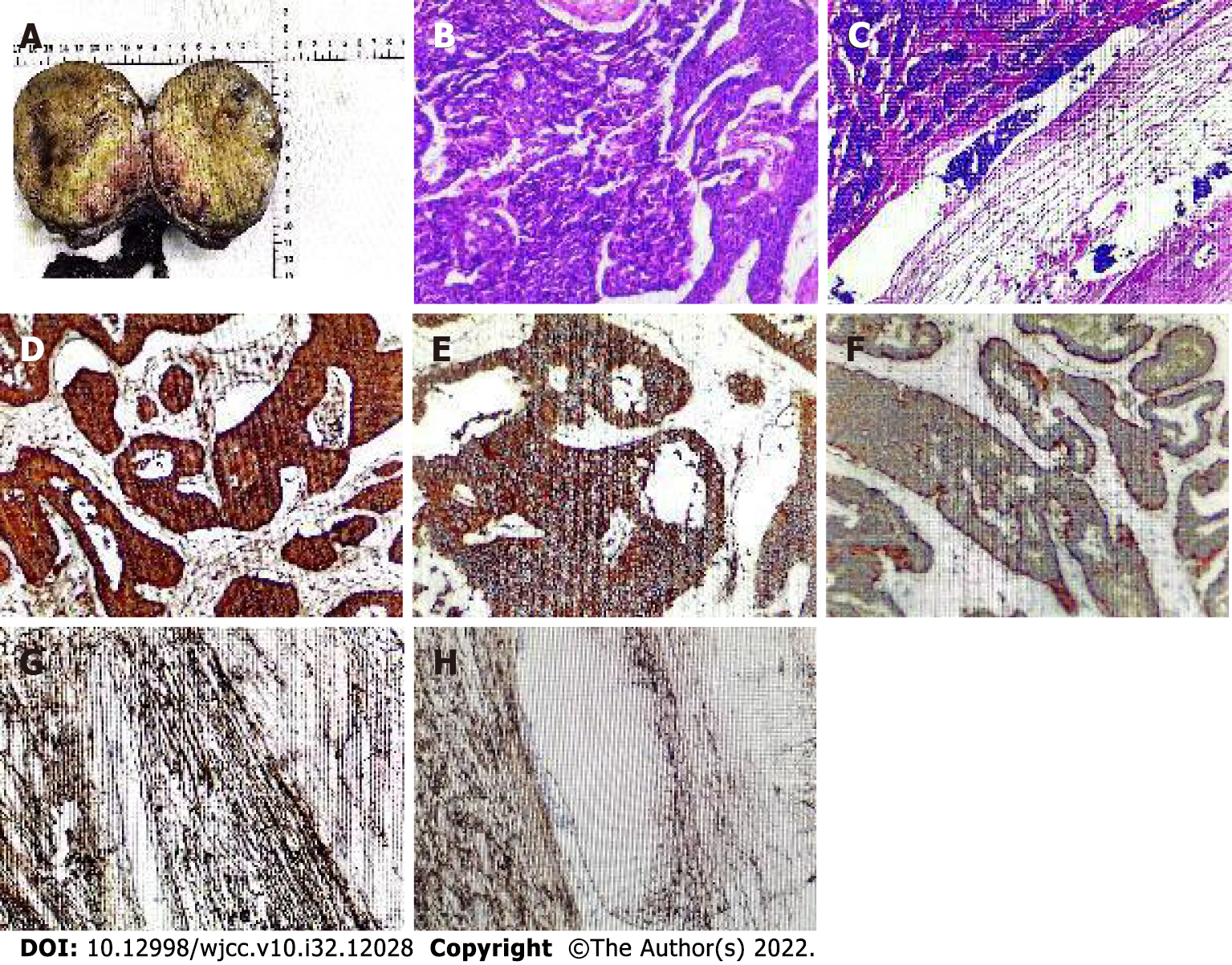Copyright
©The Author(s) 2022.
World J Clin Cases. Nov 16, 2022; 10(32): 12028-12035
Published online Nov 16, 2022. doi: 10.12998/wjcc.v10.i32.12028
Published online Nov 16, 2022. doi: 10.12998/wjcc.v10.i32.12028
Figure 1 Plain and enhanced computed tomography images of the middle and lower abdomen.
A: Computed tomography (CT)-enhanced images of abnormal nodules in the liver (arrow); B: CT plain scan images of abnormal nodules in the liver (arrow); C: CT plain scan image of the right testicular tumor (arrow); D: CT-enhanced image of the right testicular tumor (arrow).
Figure 2 Upper abdomen + testis magnetic resonance imaging (plain + enhanced) images.
A: Magnetic resonance imaging (MRI) delayed phase images of abnormal nodules in the liver (arrow); B: MRI venous phase images of abnormal nodules in the liver (arrow); C: Frontal image of MRI scan of the right testicular tumor (arrow); D: Right testicular tumor MRI scan side view image (arrow).
Figure 3 Postoperative pathology and immunohistochemistry.
A: The resected specimen consisted of the right testis, tumor, spermatic cord, and epididymis; B and C: Histological HE staining of primary neuroendocrine tumors of the testis; D: Tumor cells positive for CgA; E: Tumor cells positive for CD56; F: Syn-positive tumor cells; G and H: Tumor cells CD34 negative.
- Citation: Xiao T, Luo LH, Guo LF, Wang LQ, Feng L. Primary testicular neuroendocrine tumor with liver lymph node metastasis: A case report and review of the literature. World J Clin Cases 2022; 10(32): 12028-12035
- URL: https://www.wjgnet.com/2307-8960/full/v10/i32/12028.htm
- DOI: https://dx.doi.org/10.12998/wjcc.v10.i32.12028











